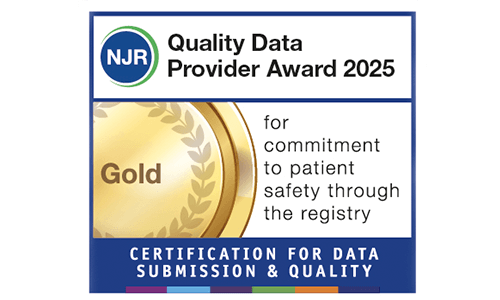Hip Surgery Specialists at New Hall Hospital
-
Mr David Cox
Orthopaedics
Mr David Cox is a Consultant Orthopaedic Surgeon at New Hall Hospital in Salisbury, Wiltshire who specialises in hip, knee and shoulder surgery.
View Profile -
Mr Ivar Kask
Orthopaedics
Mr Ivar Kask is a Consultant Orthopaedic Surgeon at new Hall Hospital in Salisbury, Wiltshire who specialises in lower limb surgery.
View Profile -
Mr Makarahalli Prabhakar
Orthopaedics
Mr Makarahalli Prabhakar is a Consultant Orthopaedic Surgeon in Wiltshire
View Profile -
Mr Jonathan Quayle
Orthopaedics
Mr Jonathan Quayle is a Consultant Orthopaedic Surgeon in Salisbury, Wiltshire who specialises in Hip and Knee Surgery
View Profile -
Mr Sridhar Sampalli
Orthopaedics
Mr Sridhar Sampalli is an Associate Trauma and Orthopaedic Surgeon at New Hall Hospital in Salisbury, who specialises in hip and knee surgery
View Profile -
Mr Gurdip Shergill
Orthopaedics
Mr Gurdip Shergill is a Consultant Orthopaedic Surgeon in Salisbury, Wiltshire who specialises in knee and shoulder surgery
View Profile -
Mr Leonidas Vachtsevanos
Orthopaedics
Mr Leo Vachtsevanos is a Consultant Trauma and Orthopaedic Surgeon in Salisbury, specialising in joint preserving knee operations and hip and knee replacement surgery.
View Profile -
Mr Ivor Vanhegan
Orthopaedics
Mr Ivor Vanhegan is a Consultant Trauma & Orthopaedic Surgeon in Salisbury who specialises in Hip & Knee surgery
View Profile -
Mr Stephen Veitch
Orthopaedics
Mr Stephen Veitch is a Consultant Orthopaedic Surgeon in Salisbury, Wiltshire who specialises in hip and knee surgery.
View Profile


